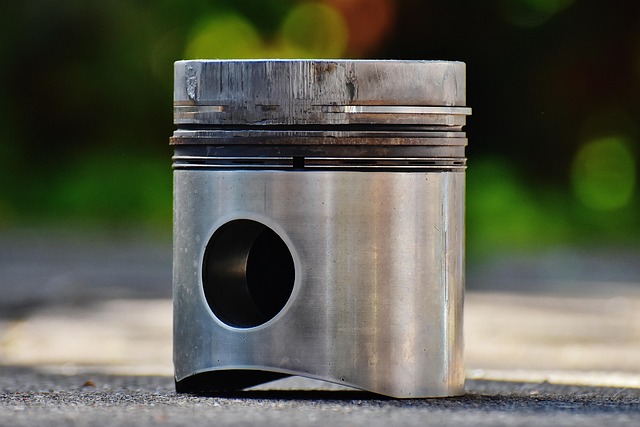Registering a car in California involves understanding specific requirements and gathering essential documents. This step-by-step guide will walk you through the process, emphasizing the crucial role of DMV VIN verification. By following these clear instructions, from preparing necessary paperwork to submitting applications and paying fees, you’ll efficiently navigate the process, ensuring your vehicle is legally registered.
- Understand Requirements for Car Registration in California
- Gather Necessary Documents for Vehicle Registration
- Perform DMV VIN Verification Step-by-Step
- Submit Application and Pay Fees for Car Registration
- Receive Your Registered Vehicle Documents
Understand Requirements for Car Registration in California

Before you start the registration process, it’s crucial to understand what’s required for car registration in California. The state Department of Motor Vehicles (DMV) has specific guidelines and documents needed to ensure your vehicle is safe for road use. One essential step is the DMV VIN verification, which involves confirming the accuracy of your vehicle’s unique identifier—the Vehicle Identification Number (VIN). This process checks that your car matches the records on file and aids in preventing fraud.
Additionally, you may opt for a mobile vin inspection or vin inspection service to have an expert conduct the VIN verification on your behalf, ensuring accuracy and saving you a trip to the DMV. These services are especially handy if you’ve recently purchased a used car or need to register a vehicle with unique circumstances. Always remember that fulfilling these requirements is not just about compliance; it ensures your safety and the safety of other drivers on California’s roads.
Gather Necessary Documents for Vehicle Registration

Before registering your vehicle in California, it’s crucial to gather all the necessary documents. This includes your vehicle’s registration certificate from the previous state (if applicable), proof of insurance, and a valid driver’s license. Additionally, you’ll need the Vehicle Identification Number (VIN) verification report, which can be obtained through a mobile VIN verifier or by conducting a simple online check with the DMV to ensure the vehicle is not stolen or has any outstanding issues.
A mobile VIN inspection or verification service can greatly simplify this process as these professionals can perform the necessary checks on-site, saving you time and effort. Alternatively, you can visit your local California DMV office to complete the registration process and obtain a new license plate. Make sure all documents are up-to-date and accurate to ensure a smooth transition for your vehicle’s registration.
Perform DMV VIN Verification Step-by-Step

To begin the registration process in California, one crucial step is to undergo a DMV VIN (Vehicle Identification Number) verification. This ensures that your car meets all legal standards and is ready for California’s roads. Here’s how to perform this step efficiently. First, gather all necessary documents like the title, registration, and proof of insurance. Then, visit the California DMV website to access their online tools or head directly to a local DMV office. If you prefer a more convenient approach, consider using a mobile vin verifier for a quick and reliable vin inspection right from your location.
Next, input your vehicle’s unique VIN into the chosen system. The platform will then cross-reference this number with its extensive database to verify critical information about the car’s history, including any reported accidents or outstanding issues. Once the verification is complete, you’ll receive a report detailing the vehicle’s status. If all checks out, great! If there are discrepancies, address them promptly to ensure a smooth registration process. A valid vin inspection ensures that your car is safe and ready for California’s diverse driving conditions.
Submit Application and Pay Fees for Car Registration

To complete the registration process, it’s time to submit your application and pay the associated fees. After you’ve gathered all necessary documents and ensured your car meets California’s safety and emission standards, you can visit a DMV office or utilize their online services for a smoother experience. If you opt for an online approach, create an account on the DMV website and follow the digital process, which may include uploading photos of your vehicle, including a clear shot of its VIN (Vehicle Identification Number) as part of the dmv vin verification procedure.
Remember that fees vary based on factors like the type of vehicle and its age. For example, certain classic cars or low-emission vehicles might have different registration costs. You can pay these fees via various methods, such as credit card, debit card, or a personal check. Alternatively, if you prefer a more efficient process, consider using mobile vin verification services that allow for quick and convenient VIN inspection, ensuring your car’s eligibility before you begin the registration journey.
Receive Your Registered Vehicle Documents

After completing your vehicle’s registration application at the DMV, you’ll receive an important set of documents. These include your Vehicle Registration Certificate and a Verification of Motor Vehicle Identification Number (VIN). The VIN is a unique code that identifies your car, and its verification is crucial for ensuring the accuracy of your registration. You may also opt for a mobile VIN inspection or verification service to simplify this process.
These documents are essential as they confirm ownership and provide legal proof of your vehicle’s identity. Always keep them secure and up-to-date, especially when conducting future transactions or inspections like a dmv vin verification.
Registering a car in California involves understanding key requirements, gathering essential documents, completing a straightforward DMV VIN verification process, submitting an application with associated fees, and receiving your official registration papers. By diligently navigating these steps, you’ll ensure your vehicle complies with state regulations, facilitating smooth road usage and legal driving experiences. Remember, a well-regulated vehicle registration is crucial for both safety and convenience on California’s roads.



